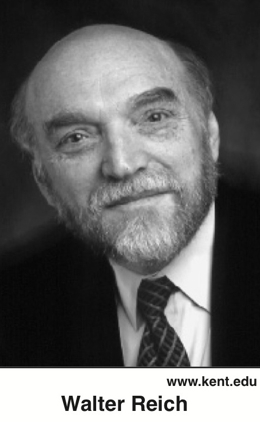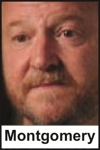Rascals case in brief
In the beginning, in 1989, more than 90 children at the Little Rascals Day Care Center in Edenton, North Carolina, accused a total of 20 adults with 429 instances of sexual abuse over a three-year period. It may have all begun with one parent’s complaint about punishment given her child.
Among the alleged perpetrators: the sheriff and mayor. But prosecutors would charge only Robin Byrum, Darlene Harris, Elizabeth “Betsy” Kelly, Robert “Bob” Kelly, Willard Scott Privott, Shelley Stone and Dawn Wilson – the Edenton 7.
Along with sodomy and beatings, allegations included a baby killed with a handgun, a child being hung upside down from a tree and being set on fire and countless other fantastic incidents involving spaceships, hot air balloons, pirate ships and trained sharks.
By the time prosecutors dropped the last charges in 1997, Little Rascals had become North Carolina’s longest and most costly criminal trial. Prosecutors kept defendants jailed in hopes at least one would turn against their supposed co-conspirators. Remarkably, none did. Another shameful record: Five defendants had to wait longer to face their accusers in court than anyone else in North Carolina history.
Between 1991 and 1997, Ofra Bikel produced three extraordinary episodes on the Little Rascals case for the PBS series “Frontline.” Although “Innocence Lost” did not deter prosecutors, it exposed their tactics and fostered nationwide skepticism and dismay.
With each passing year, the absurdity of the Little Rascals charges has become more obvious. But no admission of error has ever come from prosecutors, police, interviewers or parents. This site is devoted to the issues raised by this case.
On Facebook
Click for earlier Facebook posts archived on this site
Click to go to
Today’s random selection from the Little Rascals Day Care archives….
Click for earlier Facebook posts archived on this site
Click to go to
Today’s random selection from the Little Rascals Day Care archives….
‘Prosecutors’ Overreaching’? Edenton had it in spades
Aug. 27, 2012
“Prosecutors are the most powerful officials in the criminal justice system. They decide whether criminal charges should be brought and what those charges should be, and they exercise almost boundless discretion in making those decisions. Prosecutors alone decide whether to offer the defendant the option of pleading guilty to reduced charges….
“Equally problematic is that the charging and plea-bargaining decisions are made behind closed doors, and prosecutors are not required to justify or explain these decisions to anyone…. The lack of transparency also leads to misconduct, like the failure to turn over exculpatory evidence – a common occurrence made famous by the prosecutors in the Duke lacrosse and Senator Ted Stevens cases.”
– From “Prosecutors’ Overreaching Goes Unchecked” by Angela J. Davis in the New York Times (Aug. 19)
Prosecutors plea-bargained cruelly though futilely with the Edenton Seven. And while the evidence-withholding in the Duke and Stevens cases may have made bigger headlines, it was no more flagrant than in Little Rascals.
One example from the North Carolina Court of Appeals order overturning Bob Kelly’s conviction (May 2, 1995):
“Judge L. Bradford Tillery, a pretrial Judge, directed the State to file and present for in camera review identifying information, medical and psychotherapeutic files and DSS files with respect to the ‘indictment children’….
“In apparent compliance with Judge Tillery’s order… the State turned over a box of files to the trial court, Judge McLelland presiding. The box contained, inter alia, complete medical notes and therapy notes on the 29 indictment children, 12 of whom testified at defendant’s trial and 17 of whom did not….
“After trial, defendant’s appellate counsel went to the Office of the Clerk of Court for Pitt County to view the exhibits. He opened several boxes containing trial exhibits, none of which were sealed. One of the boxes contained 29 files labeled with the names of the indictment children. Appellate counsel reviewed some of the documents contained in the files before requesting the box to be sealed and transmitted to the Court of Appeals…. Defendant argues that the files contained undisclosed information that would have been material to the defense.”
In fact, the withheld files were bulging with exculpation – conflicting claims, evidence of hysteria, eyewitness testimony that nothing happened. Countless other examples are documented in Bob Kelly’s appeal brief.
Attorney General Mike Easley bridled at the appeals court’s concern over such “small areas… none of which are very significant.” And, after all, as prosecutor Bill Hart had asked smirkingly during the trial, “If you were playing poker, would you be playing with your full hand showing?”
Practicing therapy ‘on the basis of sheer myth’
Jan. 5, 2014
 “Probably the main reason for the growth of false charges of (sexual) abuse has been the recent proliferation of abuse specialists and therapists, many of whom lack any knowledge of mental illness or the workings of memory. These specialists believe fervently that many of the difficulties experienced by the people who consult them are due to sexual abuse that, if it isn’t remembered, can be jogged into memory by various recovery techniques.
“Probably the main reason for the growth of false charges of (sexual) abuse has been the recent proliferation of abuse specialists and therapists, many of whom lack any knowledge of mental illness or the workings of memory. These specialists believe fervently that many of the difficulties experienced by the people who consult them are due to sexual abuse that, if it isn’t remembered, can be jogged into memory by various recovery techniques.
“For decades, therapists of various kinds have put forward one unproved theory after another to explain personal unhappiness, dissatisfaction or serious psychological dysfunction. Earlier, as (Michael) Yapko points out (in “Suggestions of Abuse: True and False Memories of Childhood Sexual Trauma”), they focused on the ‘inner child,’ the ‘dysfunctional family’ or ‘co-dependency’; now it’s sexual abuse….
“In 1992, Mr. Yapko gathered data from more than 860 therapists across the country about the roles they think suggestion and memory play in therapy, especially in the dredging up of repressed memories of sexual abuse. ‘It is not an exaggeration,’ he concludes, ‘to say that many therapists appear to practice their profession on the basis of sheer myth….’ ”
– From “The Monster In the Mists” by Walter Reich in the New York Times (May 15, 1994)
Junior Chandler victimized by overreaching experts
 Jan. 31, 2012
Jan. 31, 2012
Expert vouching.
That odd little legalism is the crucial issue in Junior Chandler’s latest – and perhaps last – shot at justice. Durham attorney Mark Montgomery has just filed an appeal on Junior’s behalf in the N.C. Supreme Court.
In Junior’s 1987 trial in Buncombe County, the prosecution ran out no fewer than six expert witnesses, including three pediatricians.
Each expert testified that Junior’s alleged victims had in fact been sexually abused “as they described” – but none could cite definitive physical evidence on which they based their validation.
In the years since, higher courts have seen the reversible error of those ways. Expert vouching is now inadmissible in the absence of physical evidence “diagnostic of” – not just “consistent with” – sexual abuse.
The case against Junior was weak and weird on all fronts. No credible eyewitnesses or physical evidence. No storyline that made a lick of sense. (Although prosecutor Bill Hart must have liked the kidnapping-and-boat-ride scenario – he called on it again four years later in the Little Rascals trial.)
Only four children testified against Junior, accounting for less than 2 percent of the 1,407-page trial transcript. Some claimed to have been abused by… Pinocchio. And jurors never heard from those children on Junior’s bus who denied seeing abuse.
Just how important was expert vouching in imposing Junior’s two consecutive life sentences?
On all charges supported by expert vouching the jury found him guilty. On all charges not supported by expert vouching it found him not guilty.
Therapists were naïve in use of dolls
 April 10, 2013
April 10, 2013
“Consider the use of anatomically detailed dolls to prompt shy or frightened children to reveal abuse. This was an innovation of the 1970s, and at first it certainly seemed like an effective and compassionate one.
“But more recent studies have cast doubt on whether these dolls prompt more accurate recall, especially for the pre-schoolage children for whom they are usually deployed.
“The doll is supposed to be a body double for the child him- or herself; but since the vast majority of children this age lack the symbolic thinking required to make such a connection– most two- and three-year-olds, for example, cannot see the relation between a room and a scale model of it – this proposition turns out to be rather dubious.
“More to the point, it seems that some children who have not been sexually abused will also play with an anatomically detailed doll in sexually suggestive ways – promptly removing its clothes, touching or grabbing its ‘genitals,’ sticking their fingers into various orifices. As the authors of one study judiciously put it, the ‘average amount of sexualized doll play by presumably non-abused children is not alarming, but there is enough of it to be potentially problematic in clinical or forensic situations.’
“In other words, if you are prepared to see signs of abuse, you may see them even in behavior that, in other contexts or at other times, would be attributed to normal sexual curiosity.
“And this is precisely the issue: At a time when there was comparatively little data available on what constituted normal sexuality in children, this vacuum was filled by people with a very narrow view of the possibilities.”
– From “Against Innocence: The truth about child abuse and the truth about children” by Margaret Talbot in The New Republic (March 15, 1999)
Prosecution therapists in the Little Rascals case made extensive use of anatomically correct dolls. During Bob Kelly’s trial, therapist Janet Hadler of Chapel Hill showed a video clip of a 5-year-old girl pressing together the pelvises of a male and a female doll. “Children who are demonstrating explicit sexual contact,” Hadler testified confidently, “are doing that because they have some knowledge of adult sexual behavior.”











0 CommentsComment on Facebook